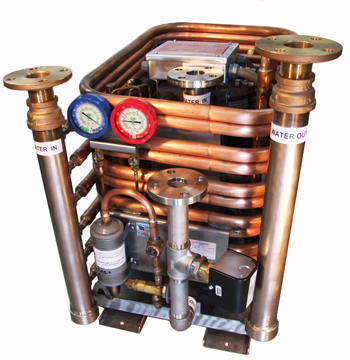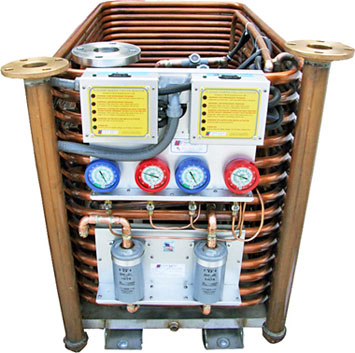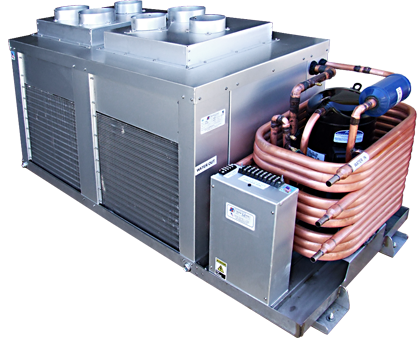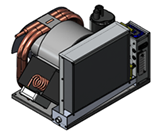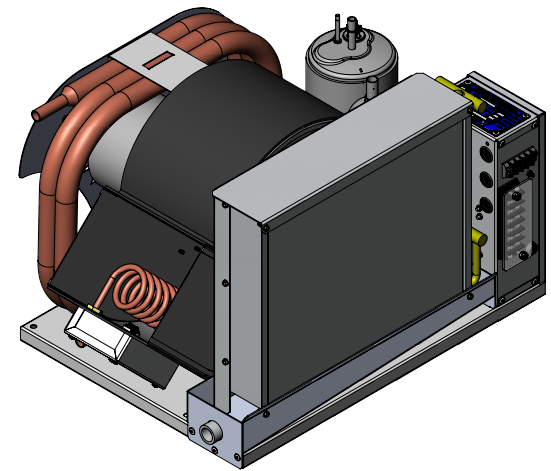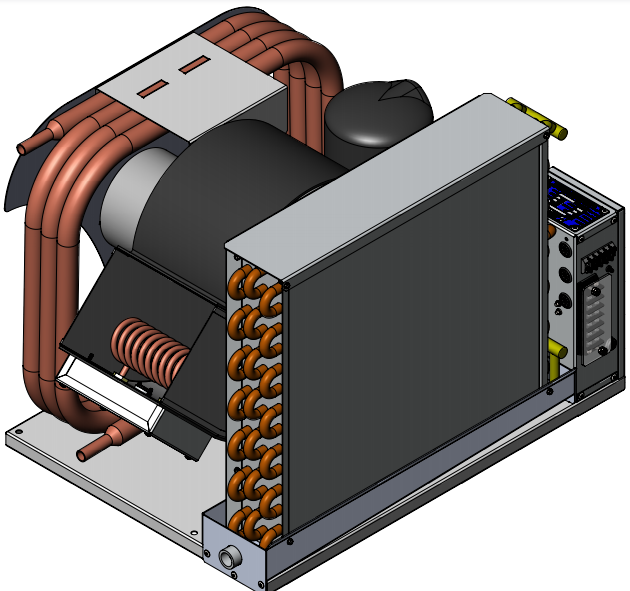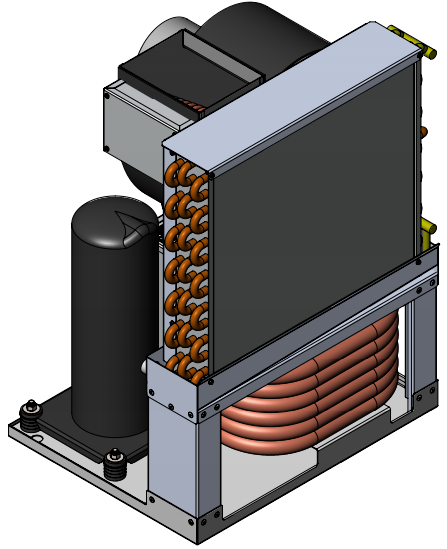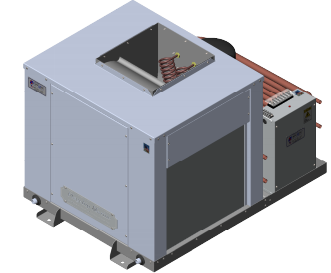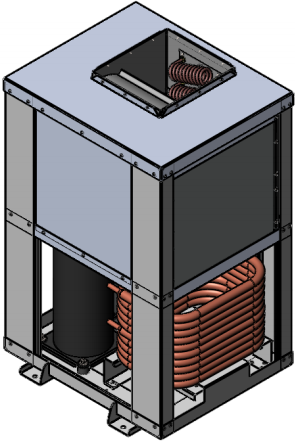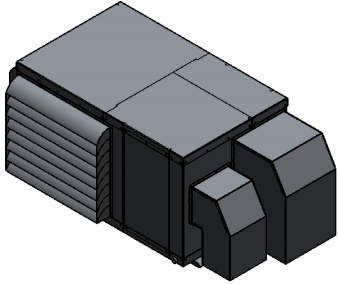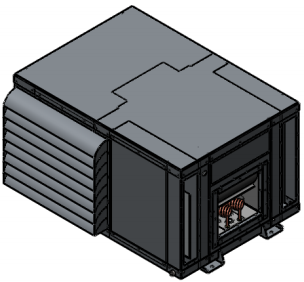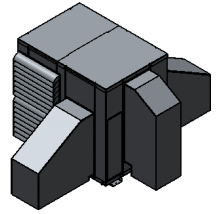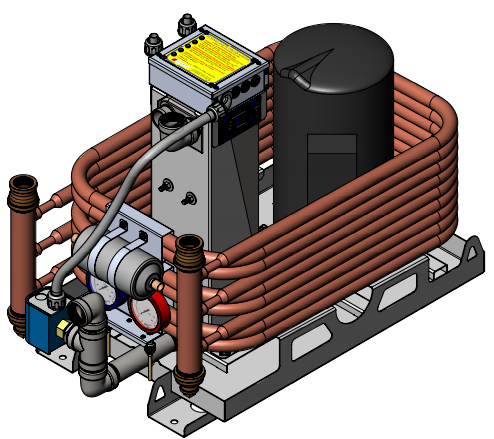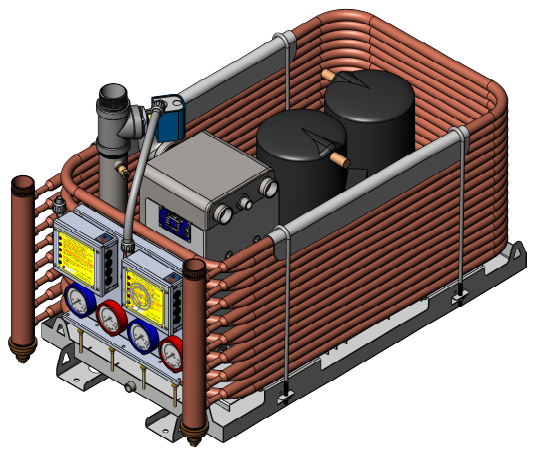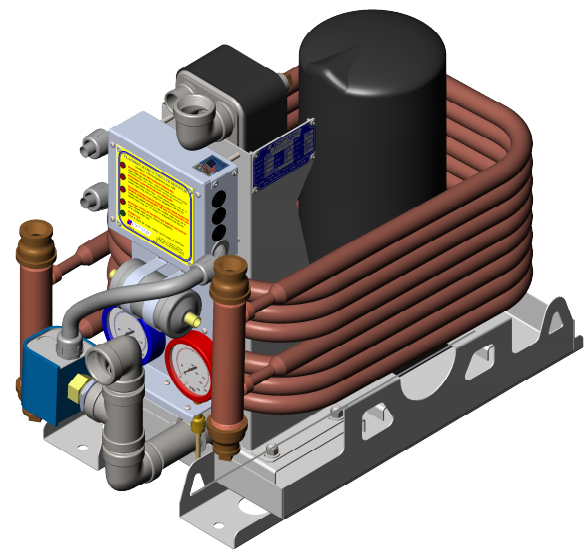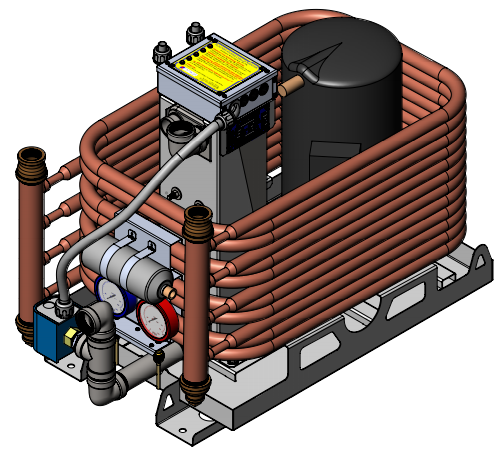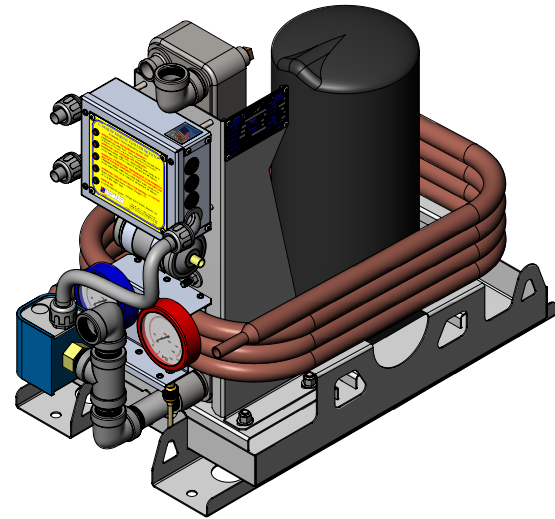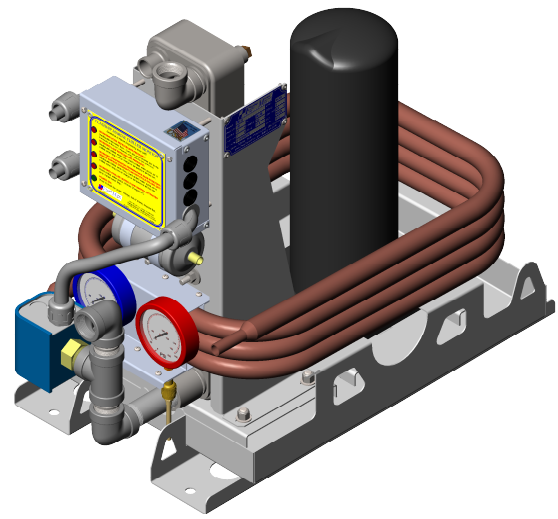If more than one AC unit is installed on a vessel, it is often desirable to have a single intake through hull fitting, a single pump, and strainer rather than multiple components to maintain and numerous hull penetrations. When you do this you have a choice of having the raw water pump run constantly or you may install a relay box that will energize the pump if any one unit starts.
To accomplish this, Flagship Marine manufacturers Pump Relay Control boxes that are compatible with all of our equipment.
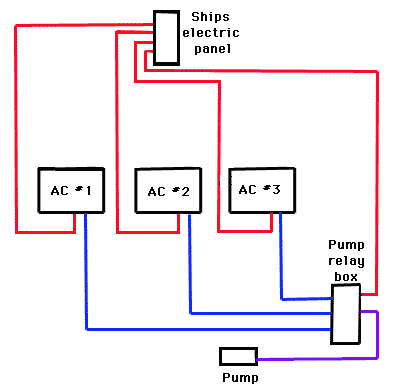
Typical wiring diagram for multiple unit installation using a pump relay box. The red wires are the high voltage (115 or 230 volts) power supply wires for the different AC units and the pump. The wire and breaker size is dependent on the current requirements of the individual components.
The blue wires (usually 24 volts AC)connect the pump output terminals of each AC unit to the pump relay box.
The purple wire is a high voltage wire (usually 115 or 230 volts) that connects the pump output of the pump relay box to the pump itself.
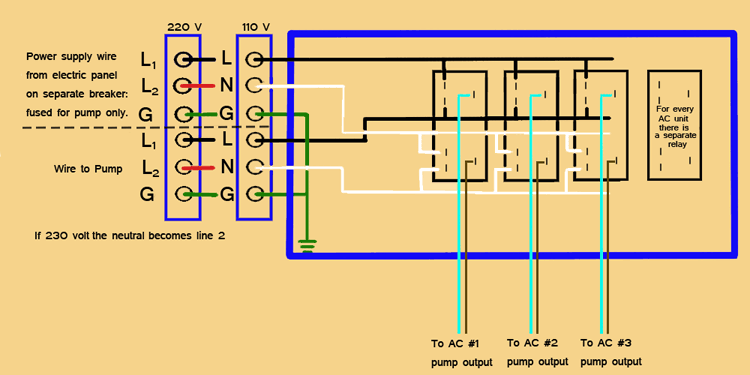
Normally the pump output is the same voltage as the unit, either 115 VAC or 230VAC – however, this can be changed in the field to the 24VAC. We prefer 24VAC for remote pump relay boxes for the safety advantage of reducing high voltage wiring in the vessel. We use high-quality enclosures that meet or exceed the NEMA 4 classification – all electrical connections are made on clearly labeled externally mounted marine terminal blocks with stainless connectors – one six position 20 amp block for the high voltage side (power supply and pump) and numerous 15 amp blocks for the individual AC unit connections.



